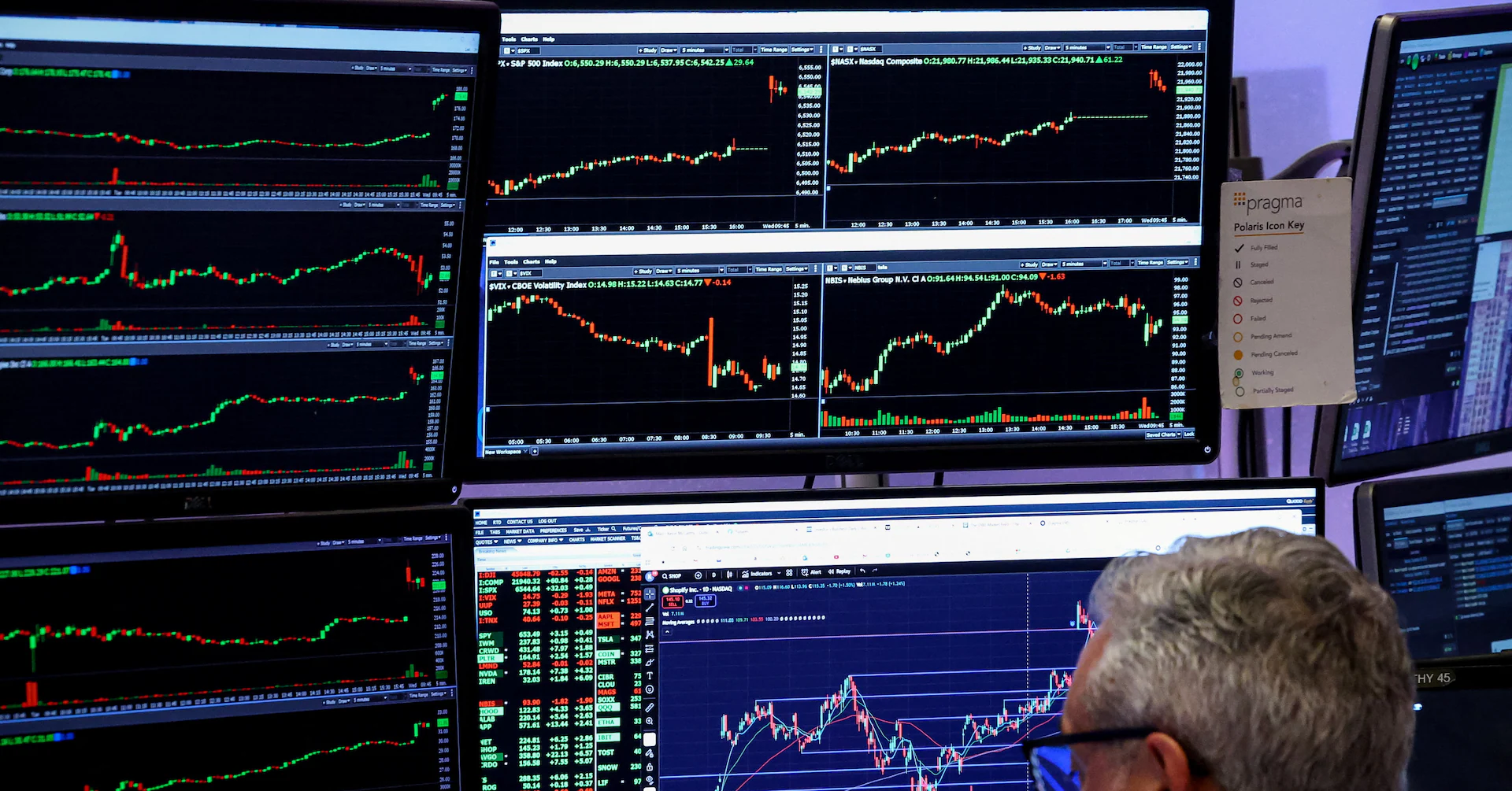By Annabel Monaghan
Copyright latestly

Bitcoin’s once-unshakable dominance in the crypto market is showing signs of erosion, marking a pivotal shift in the current cycle. After peaking in June 2025, its market share has steadily slipped, opening the door for major altcoins to capture greater attention. Ethereum, BNB, and XRP have emerged as standout beneficiaries, buoyed by fresh capital inflows, growing institutional recognition, and expanding real-world use cases. This changing dynamic reflects a broader trend, investors are no longer treating crypto as a single-asset story centered on Bitcoin. Instead, they are diversifying into assets that offer exposure to decentralized finance, smart contracts, payments infrastructure, and blockchain ecosystems. The result is a more balanced market landscape, where altcoins are not just alternatives to Bitcoin but increasingly seen as essential pillars of the digital asset economy. A Shift in Crypto Market Dynamics Market dynamics and investor interests are shifting as Bitcoin’s market dominance has declined from 65.1% to 57% over a two-month period. Despite this drop in dominance, institutional investors have allocated over 1.29 million BTC through ETFs. Institutional adoption has replaced retail-led bull cycles where Bitcoin dominance increased to similar levels. This is driven by growing regulatory frameworks that helped legitimize Bitcoin and Ethereum as investment avenues. Similarly, following Bitcoin’s rise through ETF inflows, Ethereum is playing catch-up. Binance France President David Princay recently commented on the potential institutional inflows into altcoins, “If or when BTC prices plateau, institutions and corporations may look to diversify their crypto holdings further. It will be interesting to observe how an altcoin season unfolds in a more mature and regulated crypto market.” Investor appetite has shifted following years of Bitcoin’s upward momentum. AltcoinGordon, a crypto analyst, highlighted how Bitcoin’s dominance losing the key 62% level after 3 years of upward momentum triggered a reset in investor interest for altcoins. As a result, the price of Ethereum and XRP have increased by 20% while Ethereum’s market dominance surged to 14%. The second asset by market cap gained ground against Bitcoin, climbing over the psychological level of $4,000 for the first time in 8 months. The previous cycle showed growing altcoin interest while Bitcoin dominance started to decline. With Bitcoin acting as an institutional anchor, the drop in dominance will define the next part of the cycle. Regulated access channels reshape flows, not just for BTC Spot channels drew $28B of inflows in 2025, driven by institutional adoption, and Ethereum ETFs experienced similar demand. Corporations now account for over $17.3 billion worth of ETH, approximately 3.4% of total supply, due to Ethereum’s ability to outperform traditional TradFi benchmarks in 2025. Ethereum is the top-performing asset class with 36% gains in 2025, while BNB recorded 19% returns, outperforming major indices like the S&P500 or large technology firms like Alphabet or Apple. Regulation and the Celaer framework contributed to transforming crypto through ETFs into attractive investments. Ethereum ETFs recorded inflows exceeding $4 billion in Q3 2025, primarily attributed to the Pectra upgrade. This growth reflects Ethereum’s increasing market presence, while ETH supplies continue to decline. As a result, capital is shifting toward altcoins with comparable credibility. H2 Signs of an Emerging Altcoin Season Bitcoin’s market dominance fell to under 60% for the first time in 2025, pushing analysts to suggest a potential altcoin season. Atlcoin season occurs when investor rotations move from Bitcoin to altcoin, and 75% of Top 50 altcoins outperform Bitcoin in a 90-day window. CoinGlass data suggests an altcoin season index score of 65, signaling a potential moment. A 2022 altcoin season peaked at scores of over 90 for consecutive months. Analysts attribute the growing altcoin momentum to Fed rate cuts, which increase investor exposure to risk-on assets. Altcoins have yet to meaningfully outperform Bitcoin, though the current cycle shows Bitcoin declining faster than major altcoins. As 21Shares’ Adrian Fritz highlighted, “there needs to be a trend reversal” for altcoin season to really begin. Similarly, stablecoin supply has reached an all-time high of $227.8 billion, reflecting potential purchasing power that flows into higher-performing crypto assets like Ethereum, XRP, or BNB. A different kind of altcoin season Crypto has undergone significant changes and requires a “major catalyst” to trigger a similar altseason as in 2022. Adrian Fritz, founder of 21Shares, argues that Bitcoin dominance is less likely to fall in the 35-40% range seen in the previous season. Early indicators of an altcoin market cycle are emerging, according to Akshat Vaidya, CEO of Maelstrom. However, he noted that the cycle has not yet reached full capacity, as the broader market continues to evolve under stricter regulatory frameworks and higher levels of liquidity, factors that have contributed to reduced volatility. Ethereum’s recent Pectra upgrade, which increased the maximum validator stake to 2,048 ETH, has coincided with upward price momentum. Following the upgrade, Ethereum recorded an 88% increase in value, reaching $4,700 within a month. As a result, a new altcoin inflow will be driven by institutional demand and network activity. With Bitcoin dominance steadily decreasing and capital flowing into altcoins such as BNB and XRP, the next altcoin season is set to be driven by institutional inflows rather than the retail-led booms.



